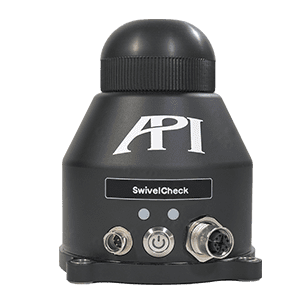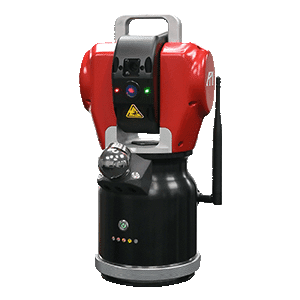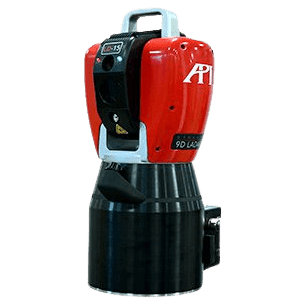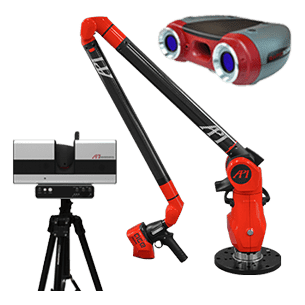The Birth Of API
“I’ll know when it’s time for me to retire,” Dr. Kam Lau says with a laugh. “I will retire one day when someone says, ‘Kam, your idea is too old.’ That’s the sign I should leave.” It’s a statement that could sound arrogant coming from someone else. But for Dr. Lau, it goes far beyond simple vanity. He has made a career, a career that has redefined manufacturing processes across industry, out of being able to see the future of metrology, and what manufacturers are going to need in that future, better than anyone else. It’s what led him to look beyond NIST shortly after completing his first primitive laser tracker design.
“If you look at the history of government R&D, there’s a lot of great work done that gets kept in a laboratory,” Dr. Lau says. “I believed that this was a great technology with a lot of potential, and I wanted to make sure the industry was going to benefit from this invention.”
So, Dr. Lau began looking for an industrial partner to help design and produce the laser tracker for industry consumption. “Between ’87 and ’89, I was building the tracker with my own money,” Dr. Lau remembers. “No companies were investing; they were more interested in hiring me for their R&D.” IBM went so far as to offer Dr. Lau $1 million dollars a year in research money to create his own division there.
“I went home and talked to my wife, and we decided that if IBM is right about me, then I shouldn’t work for them; I should work for myself,” Dr. Lau says. “That gave me a lot of excitement; so, the next day I submitted a resignation letter to NIST and formed the company API.”
The early years were filled with difficulty. “For survival, you work very, very hard,” Dr. Lau recalls. “You work 12, 15 hours a day; you are everything from R&D to Accounting to Sales, and at night you become the janitor. It was a lot of hardship, but a lot of excitement too.”
Dr. Lau’s reputation at NIST, and his penchant for designing 3D analog probes, generated enough sales to keep the company going early on. They hired two more engineers, including Dr. Ma, who would stay with the company for more than 25 years, rising to the rank of Director of Engineering, and moved into an 1,100 square foot warehouse. “We did our own renovations to make a lab, an office, etc,” Dr. Lau says. “You do everything to make sure the company is able to survive.”
On top of all of that, they were still trying to figure out how to make the first functioning prototype of the laser tracker, which came with it’s own set of challenges. “An interferometer had never been used on a mobile platform,” Dr. Lau explains. “And we needed motors that had a very slow rev speed because you’re trying to hit a target. They were never designed in that way at that time. We also had to find a way to measure the accuracy of the tracker and define its applications to the manufacturing industry.”
As the fledging API sorted through these issues, Dr. Lau finally found an industrial partner to begin producing laser trackers with. In December 1989, API signed a contract with Swiss company Wild to teach Wild how to make laser trackers based on API’s initial prototype. Wild would go on to become Leica Geosystems and later become a part of Hexagon AB. “By that time, we had about 4 or 5 trackers made, and the interest level had raised, particularly in the aircraft industry along with military manufacturers,” Dr. Lau says. “[Wild] realized fairly quickly the potential of the laser tracker. So, we were able to do quite a bit of business in those two industries.”
The royalties from these initial tracker sales from ’89-’99 allowed API to begin to flourish. Using some of Dr. Lau’s other designs from his time at NIST, API created the XD Laser and Ballbar to lead the successful Machine Tool Calibration (MTC) and CMM product lines.
Yet for Dr. Lau, the tinkerer with a lifelong passion of understanding how things worked and a desire to make them work better, improving on the laser tracker never stopped.
“Of course, we were always working on advanced laser tracker concepts,” Dr. Lau says matter-of-factly. “And in 1999, we developed the second generation of laser tracker called the T2, which was much more robust. So, we went to Leica to present it, and I was surprised that they weren’t interested. They claimed that anyone who needed a tracker had already been sold to by them, so they didn’t need a smaller, lower cost laser tracker. I didn’t think that was true; we still hadn’t gone into fields like Automotive or Machinery.”
So, in 1999, API released its next generation tracker, the T2. The move sparked a decade of rapid development for the company. They moved into the current-day Rockville, MD facility after ten years at the warehouse in Cessna Ave. “We put more investment into manufacturing, quality control, and building our own facilities with CNC machines,” Dr. Lau remembers. “And we continued to invest heavily in R&D, which has always been our bread and butter.” The company also began to expand overseas, first in Beijing in 2000, and then opening their first European office in 2005.
And through it all, Dr. Lau has kept the company focused on looking forward to what is next. API spearheaded the next generation of trackers with the T3, the OT2, and the current Radian Tracker series. They’ve advanced tracker target technology with probes like the vProbe and automated targets like the Smart Track Sensor (STS)*. And they’re leading the charge towards Dr. Lau’s original goal of using the tracker to measure and improve the performance of robots with the Checkbox, featuring Robot Measurement Software (RMS) and Smart Factory Inspections Systems (SFIS).
“I believe the core value of API has always been our people and their ability to innovate, create new ideas, and have a vision to change the industry,” Dr. Lau says. “For 35 years, I’ve said, we’re consistently 10 years ahead of our competitors in realizing what the industry is going to need in metrology. That’s the people we’ve had. Now, many have retired and left after 20, 25, 30 years with API, so we have the second generation of engineers and managers that are stepping up to the plate. The greatest value of API is the ability to keep this creativity and innovation across generations.”
This second generation of entrepreneurial spirits is why Dr. Lau isn’t afraid to be told one day that his ideas are “too old.” “That’s the day, I’ll know the second generation is ready to completely take over API,” Dr. Lau says.
He’ll know because he’ll see in them the same curiosity and wonder that once drove an eight-year-old boy in Hong Kong to begin making his own toys.
*Not available in Germany.
READ PART 1 HERE
READ PART 3 HERE
INTERESTED IN OUR METROLOGY PRODUCTS OR SERVICES? CONTACT US HERE.













